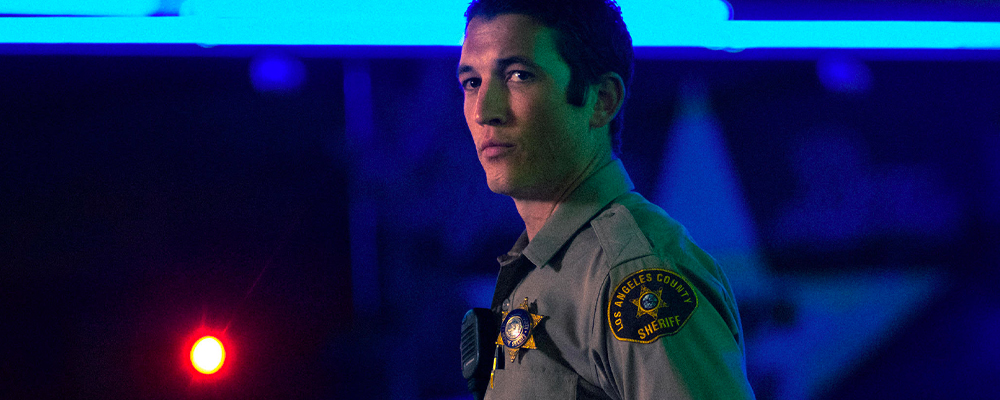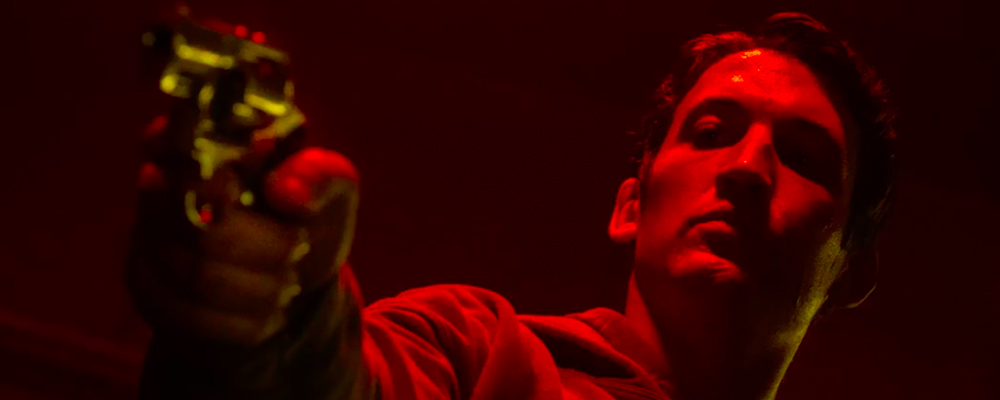‘Too Old To Die Young’ Might Not Inspire Bing-Watching but It’s an Atmospheric Experience
Alci Rengifo
Nicolas Winding Refn isn’t doing anything by the rules when it comes to his Amazon series “Too Old To Die Young.” Everything movie aficionados love or find pretentious about the Danish auteur is packed into 10 episodes, most running the length of a feature film. Yet, in hindsight, this makes sense when you look at Refn’s cinematic body of work. Overly stylish, dismissive of narrative norms, Refn has always been about the aesthetic pleasures of watching images, even when he throws in jarring violence. Story becomes an afterthought.
The fourth and fifth episodes were screened earlier at the Cannes Film Festival as one 138-minute movie. It’s easy to see why. Together they form a quite self-contained story, or semblance thereof. Miles Teller is Martin Jones, a tensely quiet L.A. cop who we see in a hotel room with a beautiful blonde in blue underwear. Cut to a support group meeting where Martin joins Viggo (John Hawkes), a former FBI agent turned vigilante. Viggo hunts for predators and perverts, even killing the guy who was leading the support group meeting after telling Martin he’s a child molester. Martin himself seems out of place at his day job at the L.A. County Sheriff’s Department, where in surreal fashion Refn shows his superiors playing little songs and then encouraging everyone to chant “fascism!” At night Martin becomes a hired gun like Viggo, receiving a target from a local boss named Damian (Babs Olusanmokun). Unhappy with a small assignment involving a Korean owing $8,000, Martin asks for something grittier. Damian informs him about pornographers making rape videos. Martin hits the road into the desert, to impose bloody justice on the fiends.
It sounds like a movie, right? With television still considered primarily a writer’s medium, there’s something impressive about Refn turning “Too Old To Die Young” into a pure work of a director’s indulgence. How enjoyable or engaging it is will depend however on your tastes or devotion to Refn’s earlier films. The adrenaline of his most famous work, “Drive,” is missing, with this being a stretched-out version of his contemplative, dreamlike and bloody movies like “Only God Forgives” and “The Neon Demon.” Going by the two provided episodes, there doesn’t necessarily seem to be a strict order to the season’s flow, it’s about how you enter the stream.
When approaching Refn it is the texture of the whole canvas that merits discussion. Part of his technique is to have the actors deliver their dialogue in a deadpan, nearly monotone style. Miles Teller seems to just inhabit spaces, standing by the window of a hotel, sitting at work like a statue while everyone else cheers along with the boss’s morning routine, or simply staring as yakuza gangsters slice off someone’s finger. Viggo has the longest monologue thus far, standing next to Martin, gazing at nighttime L.A. traffic and commenting on humanity’s conquest of nature. In a way Teller is taking over for Ryan Gosling, a Refn regular who played the same kind of role in the excellent “Drive” and bizarre, hallucinatory “Only God Forgives,” acting more as a walking, introverted agent of death. This works in giving other characters a truly ominous air, like the pornographer played by James Urbaniak, who we first see interviewing a young prospect soon to be raped for his camera. Stiff but almost reptilian, Urbaniak creates a sense of unease akin to a David Lynch character.
Unchained via the world of TV, Refn takes his more contemplative style to its limit. Some viewers accustomed to even regular “slow burner” shows might grow weary with Refn’s long takes, extended silences and scenes where even the bartender just stands around texting on her phone. But for the more adventurous what will stand out is Refn’s ever so gorgeous eye for stylistic compositions and immersive ambiance. The cinematography by the great Darius Khondji bathes every frame in neon glows, hazy sunlight and cold moonlight. Another regular Refn collaborator, composer Cliff Martinez, creates the show’s electro-noir backbeat, using alluring waves of techno sound. Refn can certainly be accused of self-indulgence, but not staleness. You can almost shut out the dialogue and marvel at how the camera is used to craft true atmosphere. Refn doesn’t push to the surrealist limits of David Lynch’s masterful “Twin Peaks: The Return” on Showtime, but he has the same spirit in taking advantage of the space streaming provides as a medium.
Refn creates moments so meandering that they almost achieve a dreamlike haze, until he punctuates the silence with terrible violence. Viggo tells Martin about the abuser in their midst before nonchalantly walking over the target’s car and blowing his brains out. The second episode becomes a stalker’s journey as Martin follows the pornographers into casinos and local bars, then it all culminates in a final chase and a bloodied character staring down the barrel of a gun. So far no one turns into an eyeball-puking model as in Refn’s “The Neon Demon,” but he hasn’t become any more squeamish.
“Too Old To Die Young” brings true arthouse experimentation to a major streaming service. It may not entice many all-day binges, but it’s still impressive as a work of style. One can almost consider it as an art piece to be discovered by the curious scanning around Amazon. Love him or be annoyed by him, Refn is that rare director with a true identity in a terrain where many artists still get roped into playing by the rules.
“Too Old To Die Young” season one begins streaming June 14 on Amazon.




